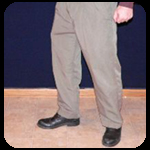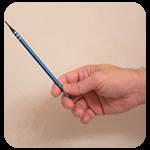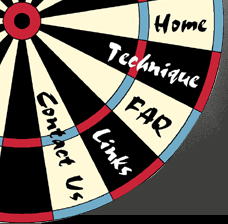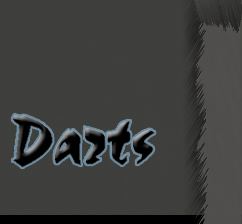| Generally speaking,
there really is no correct way to throw Stiletto Darts. People
adopt a throwing style based on what works for them. Techniques
are derived from the various styles of shuriken (oriental spikes
used in martial arts) and knife throws. There is certainly influence
from the standard dart throw as well. |
 |
|
|
The
typical stance involves placing your foot, on the side of
your throwing hand, to the line, and in line with the direction
of the dartboard. Your other foot is then placed in back,
and slightly off to the side. Your back foot should be rotated
45 to 90 degrees off your front foot for a fairly natural
stance. |
 |
 |
|
Pinch
the back of the dart between the thumb, and the first two
fingers of your throwing hand. The shaft should rest in the
crease of the first knuckle of the index and middle fingers,
and the tip of your thumb should rest lightly on the grooves.
The tip of the dart should point up, away from your hand. |
 |
 |
|
Begin
with your throwing arm and hand extended horizontally in the
direction of the dartboard. Your shoulders should be turned
45 degrees away from the dartboard so that the shoulder of
your throwing hand is closest to it. Keeping your wrist straight,
bring your hand up alongside the ear. Then snap your forearm
forward and release the dart as the arc of your hand comes
in line with the target. Your hand will continue along this
arc to allow for good follow through. |
|
 |
|
A
successful Stiletto Dart throw should stick in the dartboard.
Unlike standard darts, Stiletto darts are not designed to
automatically orient themselves to point tip first toward
the dartboard. Therefore, you must gauge how much to rotate
the dart as it leaves your hand. This adds additional challenge
and sport to the game. When using the standard grip noted
above, the dart typically rotates 1 ¼ turns before
hitting the dartboard. With some experience, you should be
able to determine if your throws rotate too far, or not enough
before striking the target. You can then adjust accordingly. |
| |
|
|
| |







